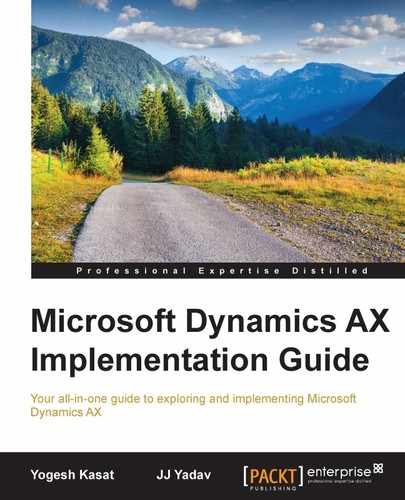ERP is in the middle of the ecosystem of business facing applications, and Microsoft Dynamics AX will need to directly or indirectly integrate with other applications. Accuracy and timely update of this information is very important for business success and growth. This chapter is about integration planning, understanding integration technologies, and integration design/development.
In this chapter, the following topics are covered:
- Integration planning
- Integration scenarios
- Integration requirements
- Integration technologies
- Application Integration Framework (AIF)
- Data Import/Export Framework (DIXF)
- Microsoft .NET Framework
- Third-party integration solutions
- Integration design and development
- Best practices and recommendations
Planning is an important part of any data integration effort. Data integration planning requires identifying integration scenarios and the high-level requirements of integration. This topic covers common integration scenarios and the common questions to be asked for gathering integration requirements.
Every project is different. So, integration requirements will vary depending on the scope and the needs of the specific project. However, there are some common areas where most of the businesses have processes that require integration. The following table shows the common integration points and possible scenarios:
In a typical integration scenario, the implementation team works with the business users, internal IT, and in some cases, representatives of the applications identified for integration to determine the requirements in detail. The following questions must be answered and documented in order to have a successful integration solution. Often, the answers to these questions are not clear-cut and will require modeling of the different scenarios to develop the best solution. That being said, starting this process early in the project is the key.
One of the key decisions to be made is whether integration should be real-time (synchronous) or asynchronous. The following table analyses both the messaging approaches and describes the scenarios when one should be selected over the other:
|
Pros |
Cons |
Good for |
Examples | |
|---|---|---|---|---|
|
Synchronous |
|
|
Transaction processing across multiple systems |
Mobile app/ handheld for PO receiving, SO picking, Inventory counting, and so on. |
|
Asynchronous |
|
|
|
|
Asynchronous messaging architectures have proven to be the best strategy for an enterprise integration because they allow for a loosely-coupled solution that overcomes the limitations of a remote communication, such as latency and unreliability. The issues of reliability and exception handling in asynchronous messaging can be overcome by utilizing request/response and logging features in the Microsoft Dynamics AX AIF Framework.
